Nova Scotia Oatcakes
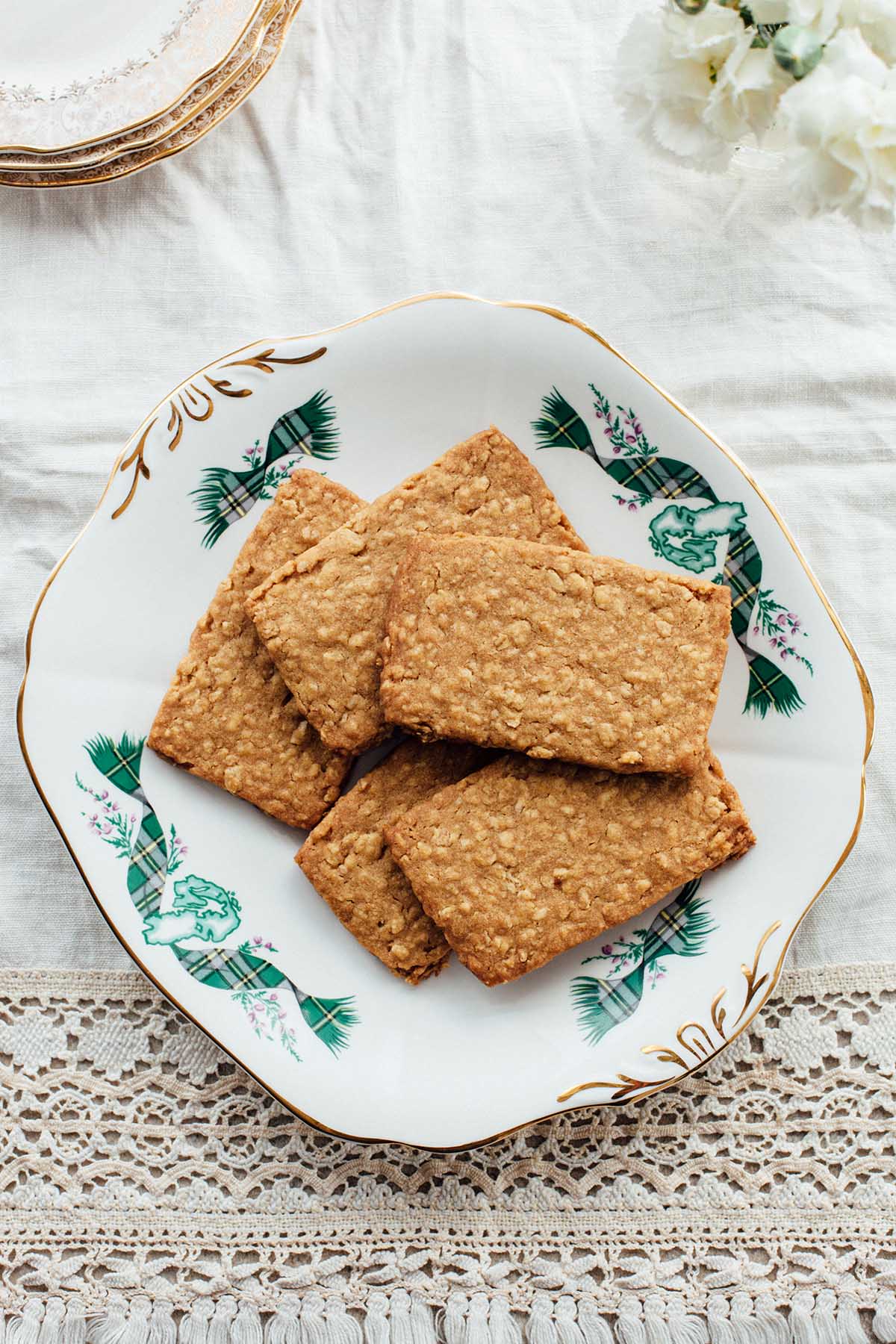
I adore old-fashioned cookie recipes such as brown sugar shortbread cookies and chocolate chip pecan cookies and these Nova Scotia oatcakes are very high on my list!
If you’re not familiar, oatcakes are lightly-sweetened shortbread-like cookies loaded with oats. Scottish in origin, oatcakes are prevalent on Cape Breton Island, located at the Eastern tip of Nova Scotia. Cape Breton has a high concentration of families with Scottish ancestry, and for this reason, oatcakes are a popular snack across the Island.
Jump to:
📋Ingredients
- All-purpose flour
- Rolled oats (sometimes called large flake oats)
- Baking powder
- Salt
- Butter
- Brown sugar
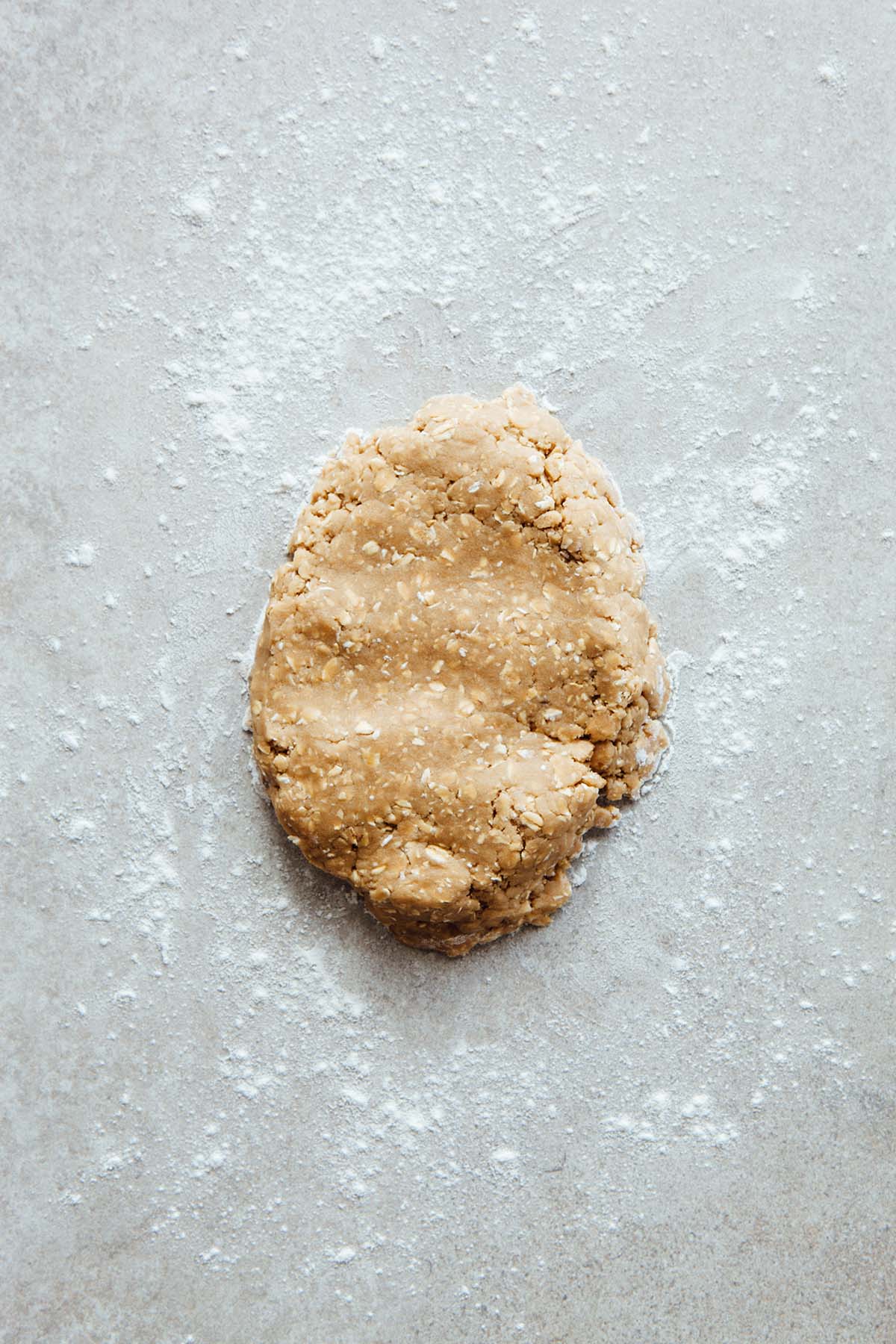
Best Oats To Use
Rolled oats, also called large flake oats, are the best oats to use in this recipe. You can make Nova Scotia oatcakes with instant oats, and they will taste pretty much the same, however, instant oats lack the hearty texture of large flake.
Some people use steel cut oats to make oatcakes. I haven’t tried this myself and would love to know if you do!
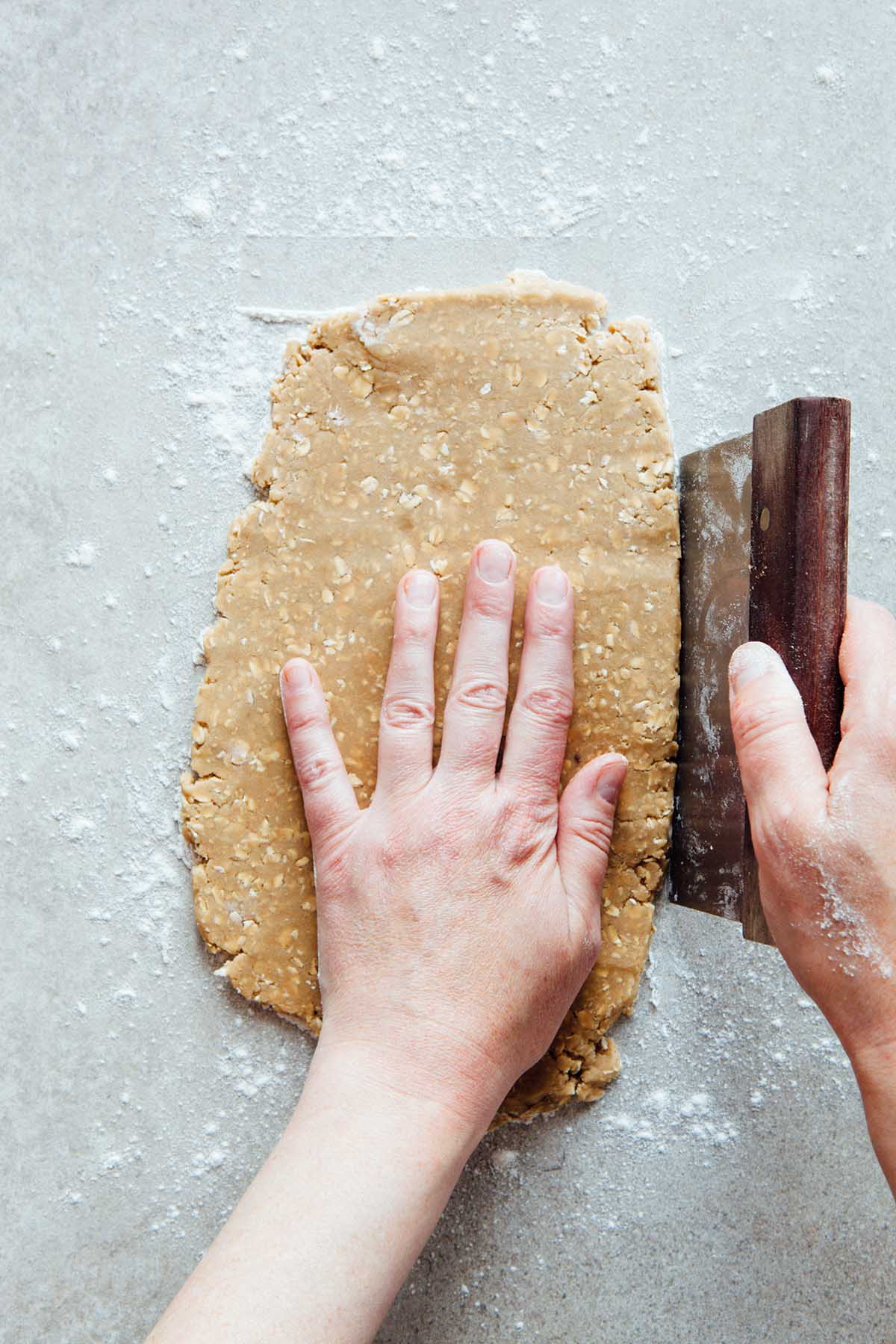
I tested my oatcakes with butter, vegan butter, shortening, vegetable oil, and coconut oil. Each batch was delicious, however, they all had different textures. Here’s what happened:
- Butter – Yields the oatcake I imagined when I first set out to develop my ideal Nova Scotia oatcakes. Beating the butter light and fluffy with a mixer gives the oats and flour something to “stick” to, and creates an oatcake that bakes up firm and crisp.
- Vegan Butter – Oatcakes made with vegan butter had the next best texture to regular butter; They held together perfectly. That being said, they lacked a bit of flavour compared to the real deal.
- Vegetable Shortening – The oatcakes made with shortening were super crumbly and didn’t hold together the way butter does, however, better than the versions made with liquid oils. I thought the shortening oatcakes would lack flavour, however, the opposite was true. The oats and brown sugar have enough going on that the absence of butter wasn’t glaringly obvious.
- Vegetable Oil – The flavour was great but the oatcakes were far too crumbly. The vegetable oil version barely held together, however, I have read of others having success with it. If I was developing an oil-based oatcake I’d have kept working to get it right, however, I prioritized the all-butter version for this post.
- Coconut Oil – Yielded the same result as vegetable oil – very, very crumbly. The coconut oil batch had a lovely light note of coconut flavour and I was sad they didn’t work out!
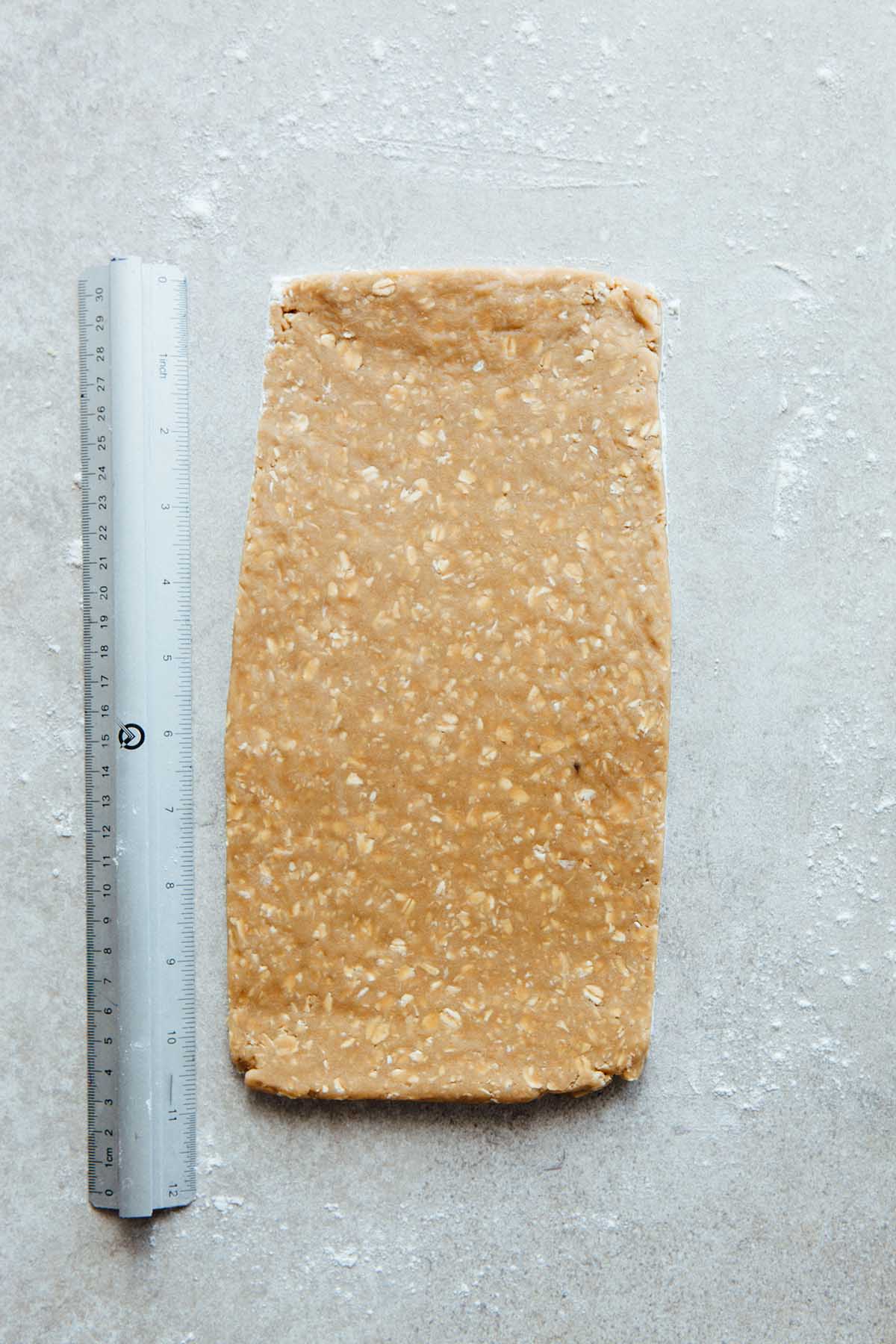
Should Oatcakes Be Cut Round Or Square?
My partner Chris is from Cape Breton. When I asked family and friends who live on the island for thoughts, one person replied, “I don’t think I’ve ever even seen a round oatcake”. That answer sealed the deal! Because this recipe is for crispy Cape Breton-style oatcakes I decided to cut them square.
I rolled my oatcake dough approximately 5-inches wide by 11-inches long (28-cm x 13-cm), and about ¼-inch (5-mm) thick.
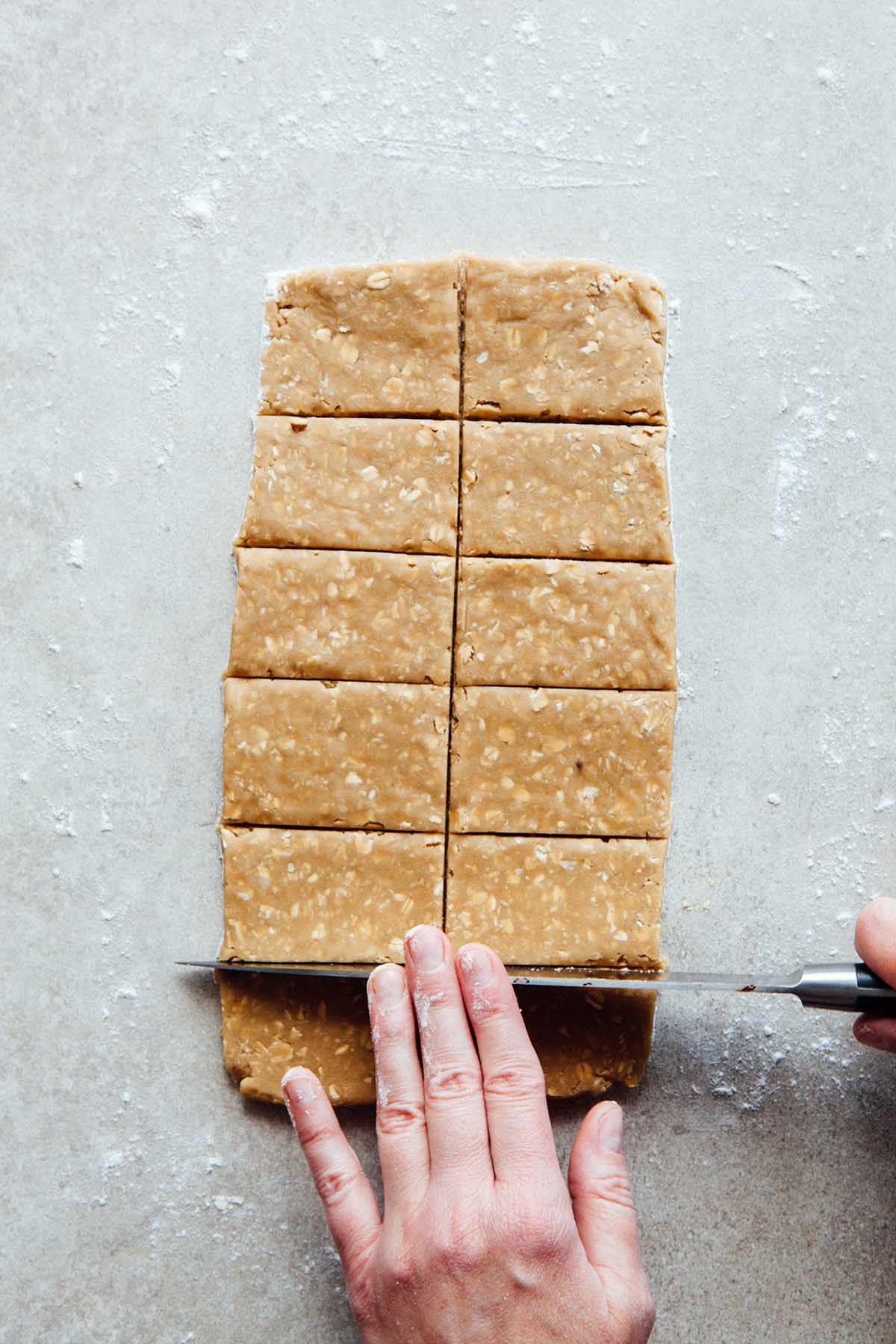
Scoring vs. Slicing
I’ve tried both scoring (cutting lines halfway through the dough then baking it in one piece to be snapped apart when cool) and slicing my oatcakes to bake as individual cookies. Both work great and I think you should just choose with whichever method you prefer.
- To Score The Oatcakes – Cut a piece of parchment paper to fit your baking sheet. Roll the oatcake dough directly on the parchment paper and transfer it to the sheet. Use a pizza cutter, or a thin sharp knife, to cut lines in the top of the dough where you want to break the oatcakes apart after they’re baked and cooled. When scoring dough, do not cut the dough all the way down to your work surface. You just want to create impressions in the dough, about halfway through, to snap clean lines later on.
- To Slice The Oatcakes – Roll your dough on a lightly floured counter top, then use a sharp knife to cut the dough. Use a small spatula, or an offset spatula to transfer the oatcakes to your parchment paper-lined baking sheet. Space the cookies evenly apart as they will spread slightly while baking.
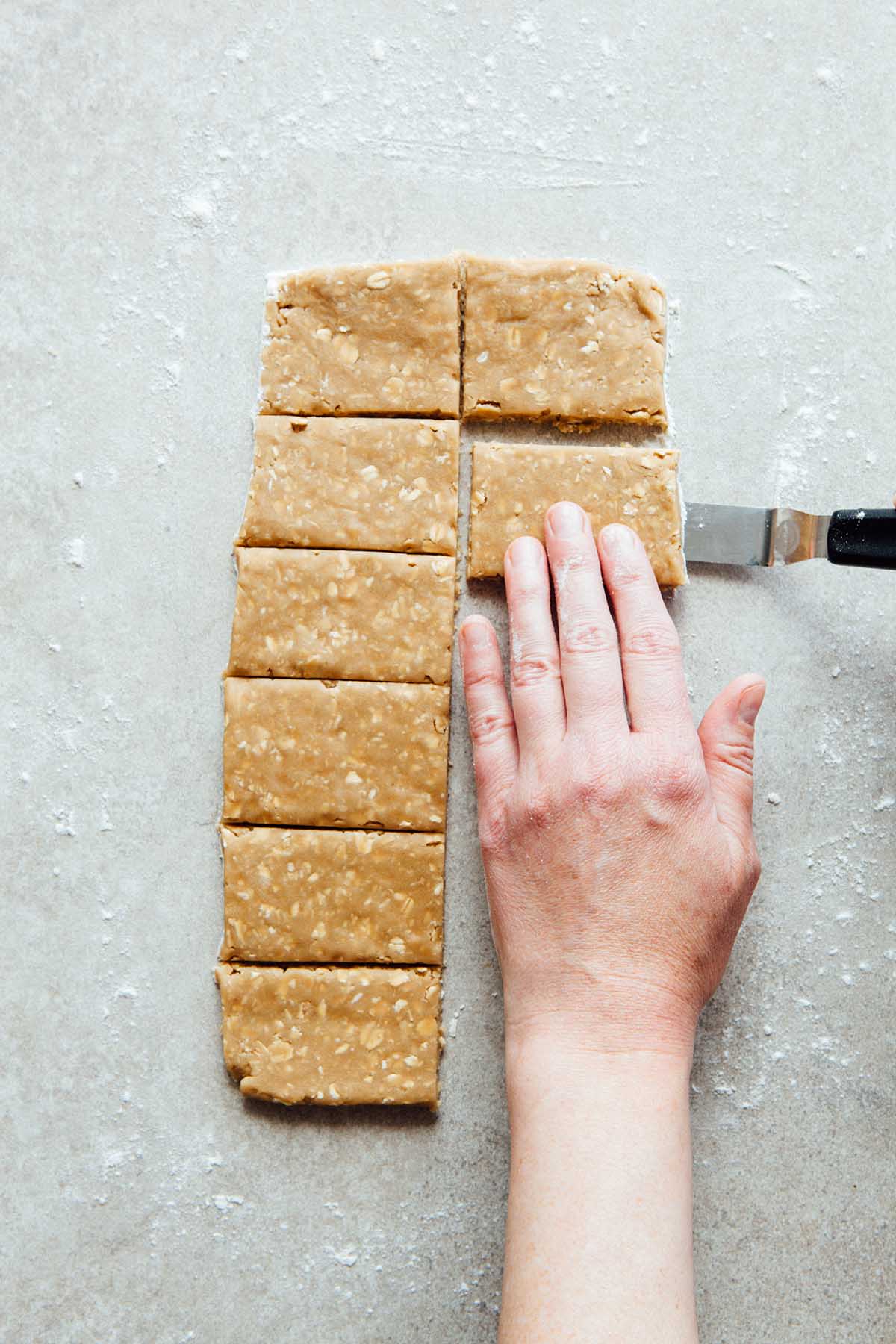
What Size Pan Should You Use?
I use a baking sheet that’s slightly smaller than a standard 13 x 18-inch (33 x 46-cm) half sheet (my pan is approximately 12 x 17-inches (31 x 43-cm). Anything in this size range will work well whether you’re leaving the dough whole and scoring the top, or slicing the dough into individual cookies.
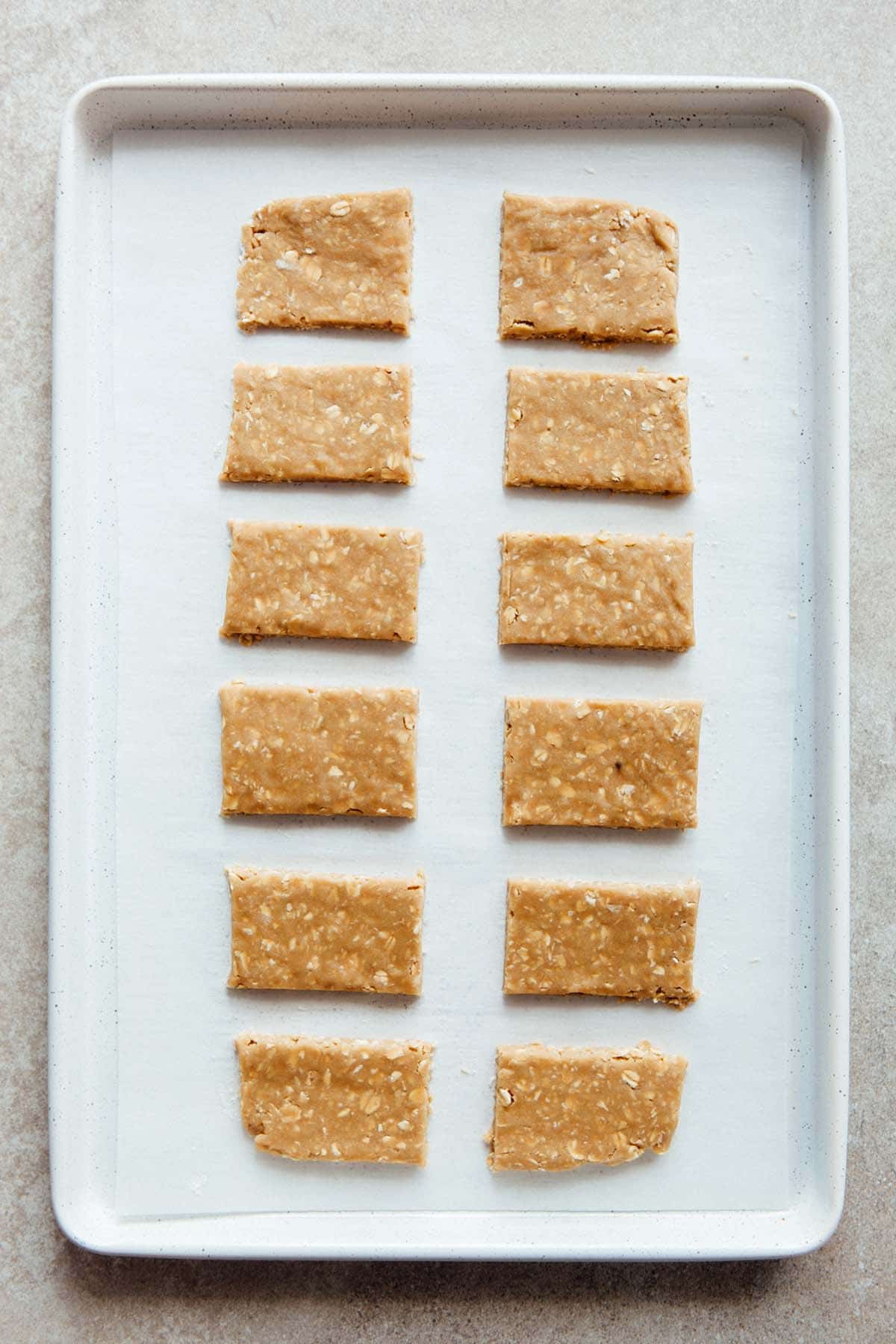
Make Oatcakes Gluten-Free, Vegan, Or Both
I made three different combinations of gluten-free and vegan oatcakes while testing this recipe. I used Bob’s Red Mill Brown Rice Flour and Vegan Becel (not sponsored) to make them as that’s what I had on hand.
Please note if you are making oatcakes with rice flour you will probably not be able to roll them with a rolling pin. Instead, pat the dough into shape with your hands.
- To Make Gluten Free Oatcakes – Substitute 1 cup (160g) of brown rice flour for the all-purpose flour and use certified gluten-free oats. You will probably not be able to roll the dough. Instead, pat it into shape with your hands.
- To Make Gluten-Free Vegan Oatcakes – Substitute 1 cup (160g) of brown rice flour for the all-purpose flour and use certified gluten-free oats. Use the same amount of vegan butter as butter called for in the recipe. You will probably not be able to roll the dough. Instead, pat it into shape with your hands.
- To Make Vegan Oatcakes – Substitute the same amount of vegan butter as butter called for in the recipe.
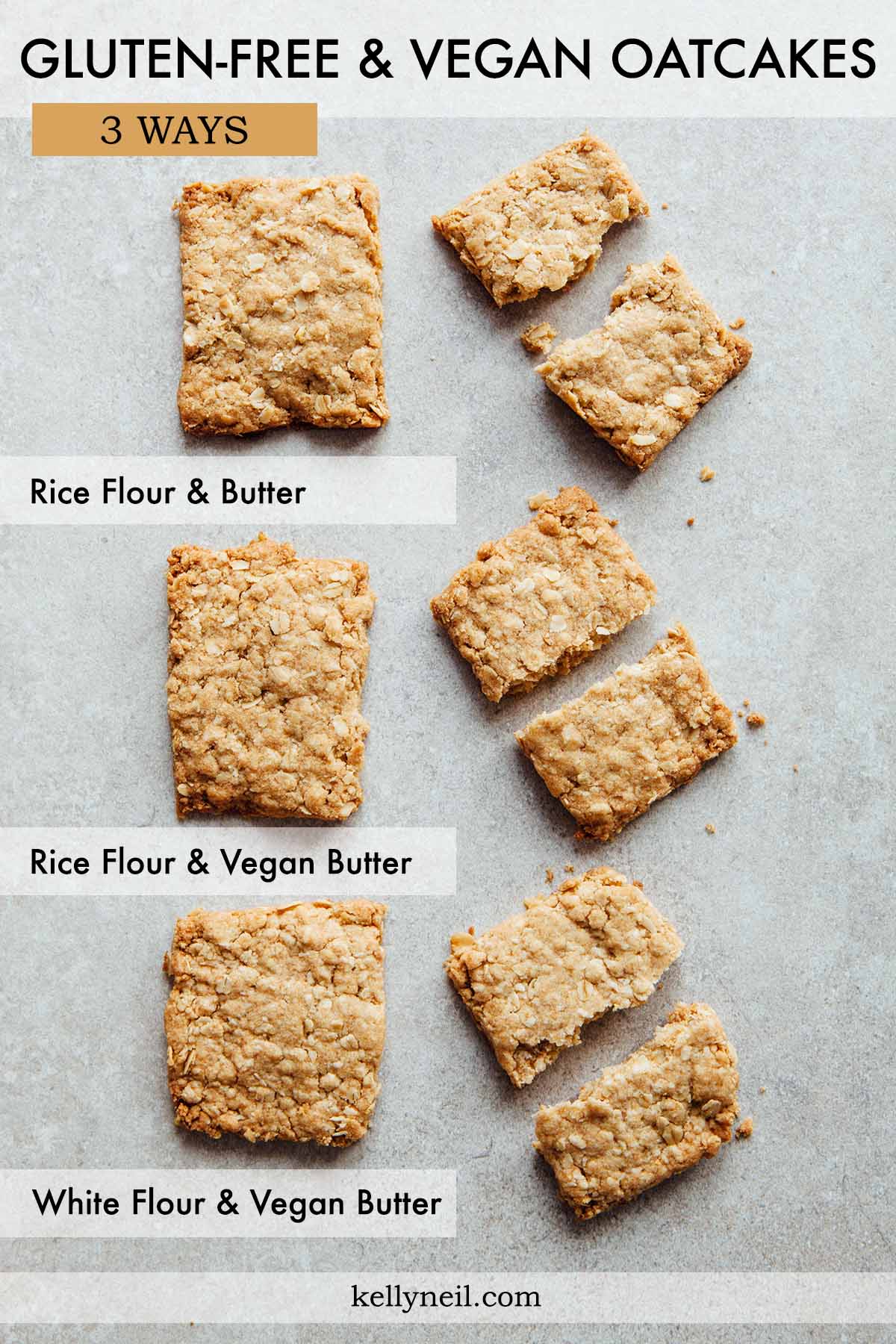
Add-Ins
I’m a purist and like to leave my Nova Scotia oatcakes unadorned, without any additions. If you do want to add other flavours, here are some ideas you could try:
- Melt some chocolate then dip one half of each cooled oatcake in the chocolate. Lay on a rack until the chocolate hardens.
- Add a dollop of peanut butter to the butter and brown sugar in the mixer and proceed with the recipe as written.
- Try spices like cinnamon, cardamom, nutmeg, or homemade chai spice
- Throw in ½ cup of nuts or seeds – walnuts, almonds, pecans, or sunflower, pumpkin, or sesame seeds
- Add ½ cup dried fruit – raisins, cranberries, or chopped dates
- Anything else you have in your pantry that you think might be delicious!
Recipe Notes
- Before Baking The Oatcakes – If you place your cookies in the oven directly after slicing they will spread a tiny bit. If you want more perfect, squared off edges place your unbaked oatcakes in the freezer for 20 minutes before putting them in the oven.
- To Serve Oatcakes – I like to eat mine plain alongside a cup of tea. My mother-in-law butters the top of her oatcakes. Others serve them with a slice of sharp cheddar. They are also fantastic accompanied by fresh fruit like apples, pears, or bananas.
- To Store Oatcakes – Place oatcakes in an airtight container with a tight fitting lid on the counter for up to one week. They will also keep on the counter, stacked together, and wrapped in foil. After one week I would pop them in the freezer. Ours never last that long!
- To Freeze Oatcakes – If using a container with a lid, place one layer of oatcakes in the bottom of the container and top with a sheet of parchment paper cut to fit. Place a second layer of oatcakes on top of the paper and repeat until all of the oatcakes are in the container. Another option is foil. Stack and wrap the oatcakes tightly in two layers of foil. For either method you can keep the oatcakes in the freezer for up to three months.
- To Reheat Oatcakes – Remove as many oatcakes as you need from the freezer. Thaw to room temperature and eat, or warm in the microwave, toaster-oven, or oven until heated through.
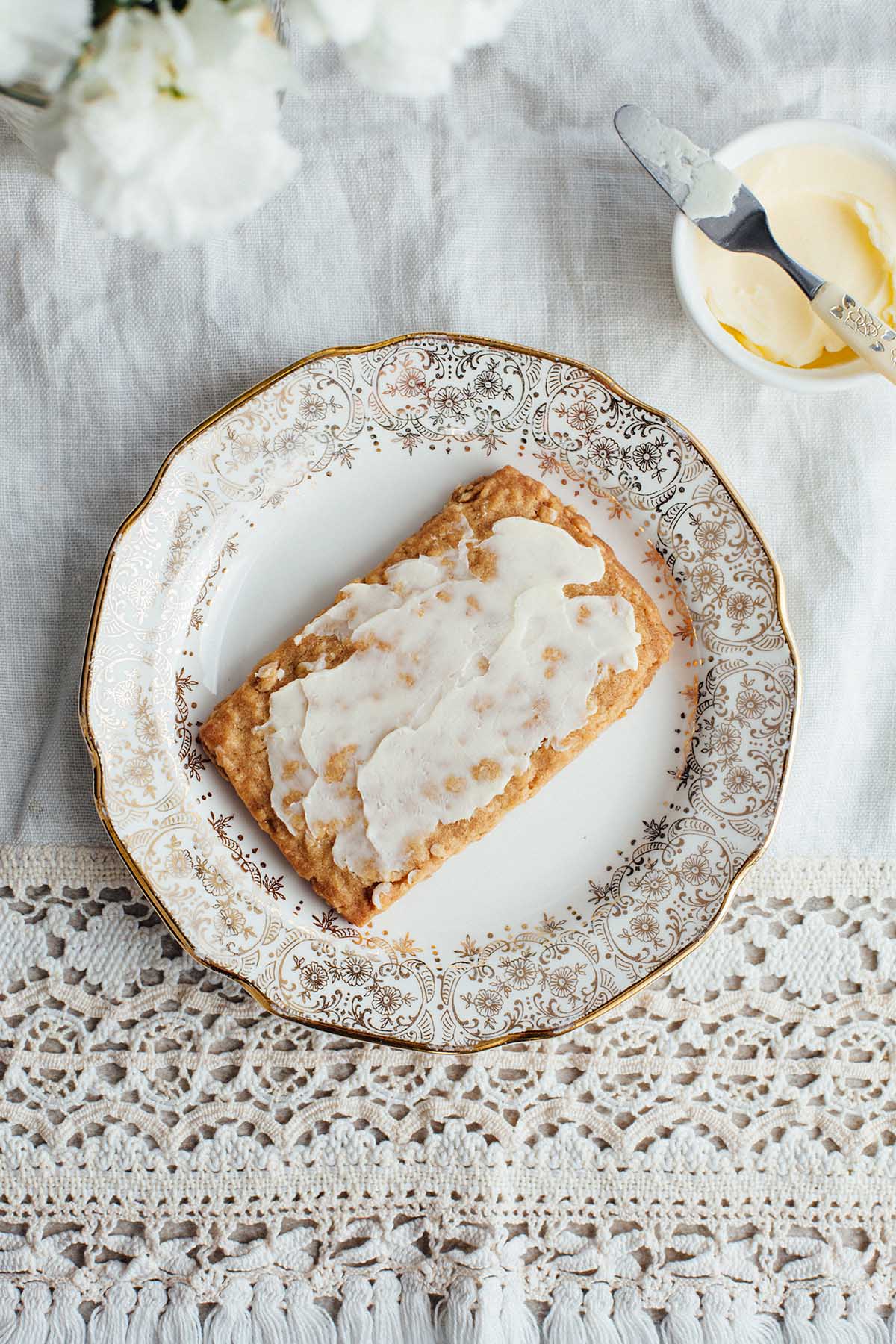
💃More Nova Scotia-Inspired Recipes
Did you make these Nova Scotia oatcakes? Please rate the recipe and tell me how it went in the comments below. Also, stay in touch with me on Instagram, Facebook, and Pinterest to see more delicious food and recipes!
Printable Recipe Card
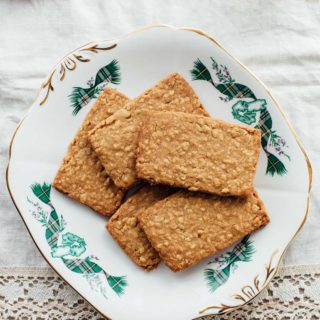
Nova Scotia Oatcakes
Special Equipment
- Baking sheet
- Parchment paper
- Stand mixer with both whisk and paddle attachment
- Rubber spatula or wooden spoon
- Rolling Pin
- Sharp knife
- Small offset spatula or something else small and flat to lift oatcakes from work surface
- Wire cooling rack
Ingredients
- 1 cup all-purpose flour
- 1 cup rolled oats , also called large flake oats
- ½ teaspoon baking powder
- ½ teaspoon salt
- ½ cup butter, room temperature
- ½ cup brown sugar
Instructions
- Preheat the oven to 350ºF (180ºC). Line a baking sheet with parchment paper.
- Mix the flour, oats, baking powder, and salt in a medium-sized bowl. Set aside.
- Place the butter in the bowl of a stand mixer and mix it with the whisk attachment, on medium-high speed, until light and fluffy, about 3 to 4 minutes.
- Add the brown sugar and continue to mix until smooth, about 2 minutes more, scraping down the sides of the bowl halfway through mixing.
- Switch to the paddle attachment. Add the flour mixture to the mixing bowl. Mix on low speed until the dough starts to clump together and most of the dry bits at the bottom of the bowl are mixed in.
- Dump the dough onto a lightly floured work surface and shape it into a smooth disc with your hands. With a rolling pin, roll the dough into a rough rectangle shape approximately 5×11-inches (28 x 13-cm) in size, and about ¼-inch (½-cm) thick.
- Use a sharp knife to cut the dough into 12 even pieces. Using a small spatula, or an offset spatula, lift each oatcake onto the prepared baking sheet.
- Place the oatcakes in the oven and bake them for 13 to 15 minutes, or until the edges are golden. Set the pan on a cooling rack and let the oatcakes cool completely. They will crisp up as they cool. Serve with tea, butter, cheese, fruit, or anything else you like.

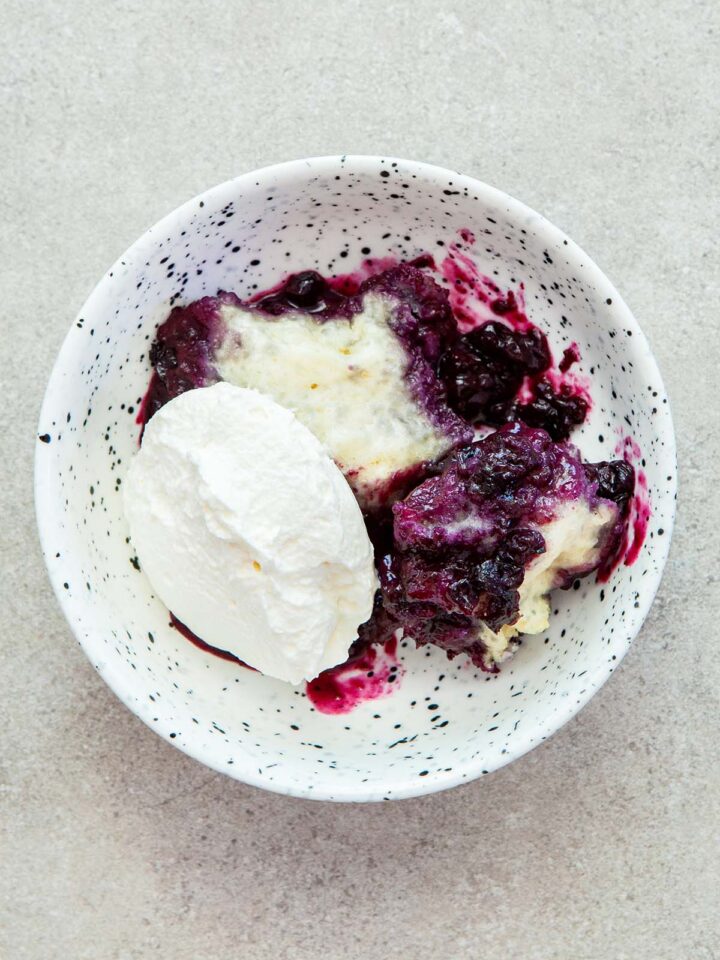
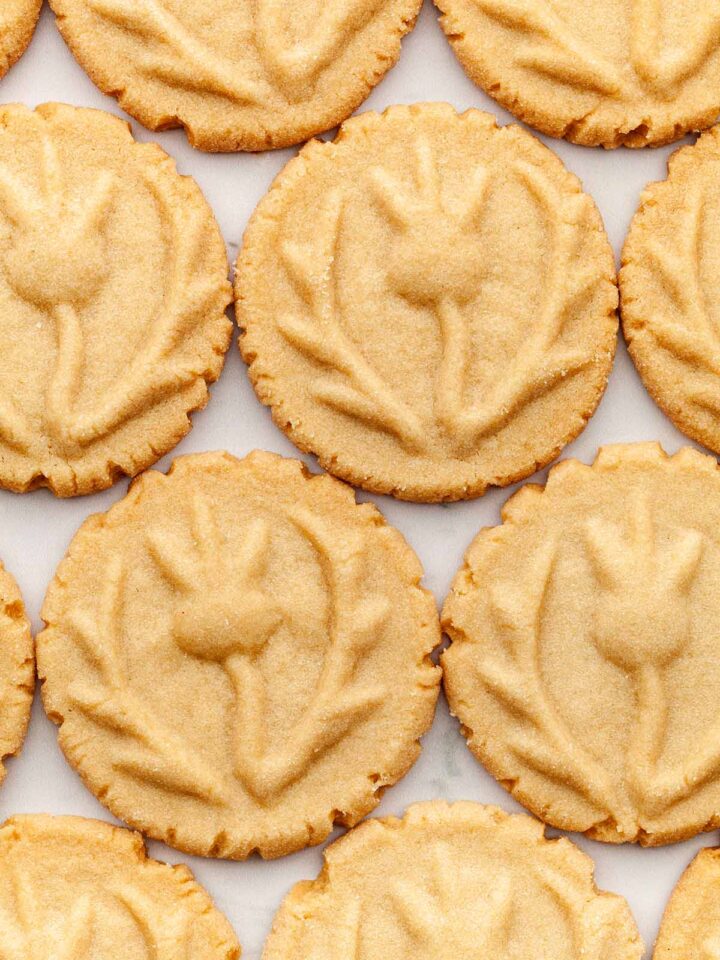
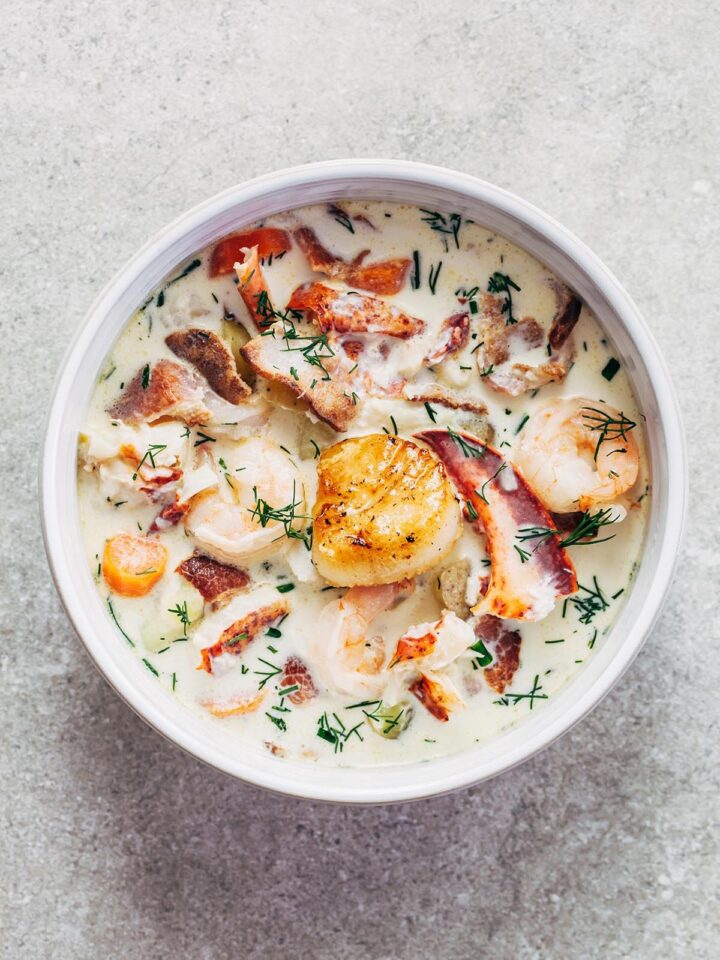
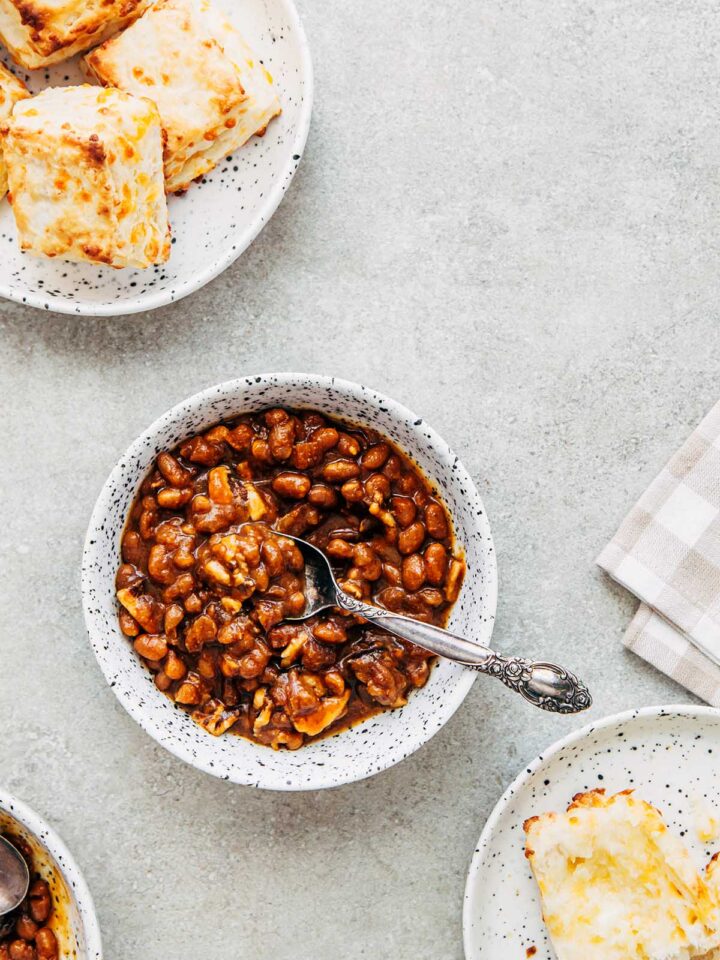
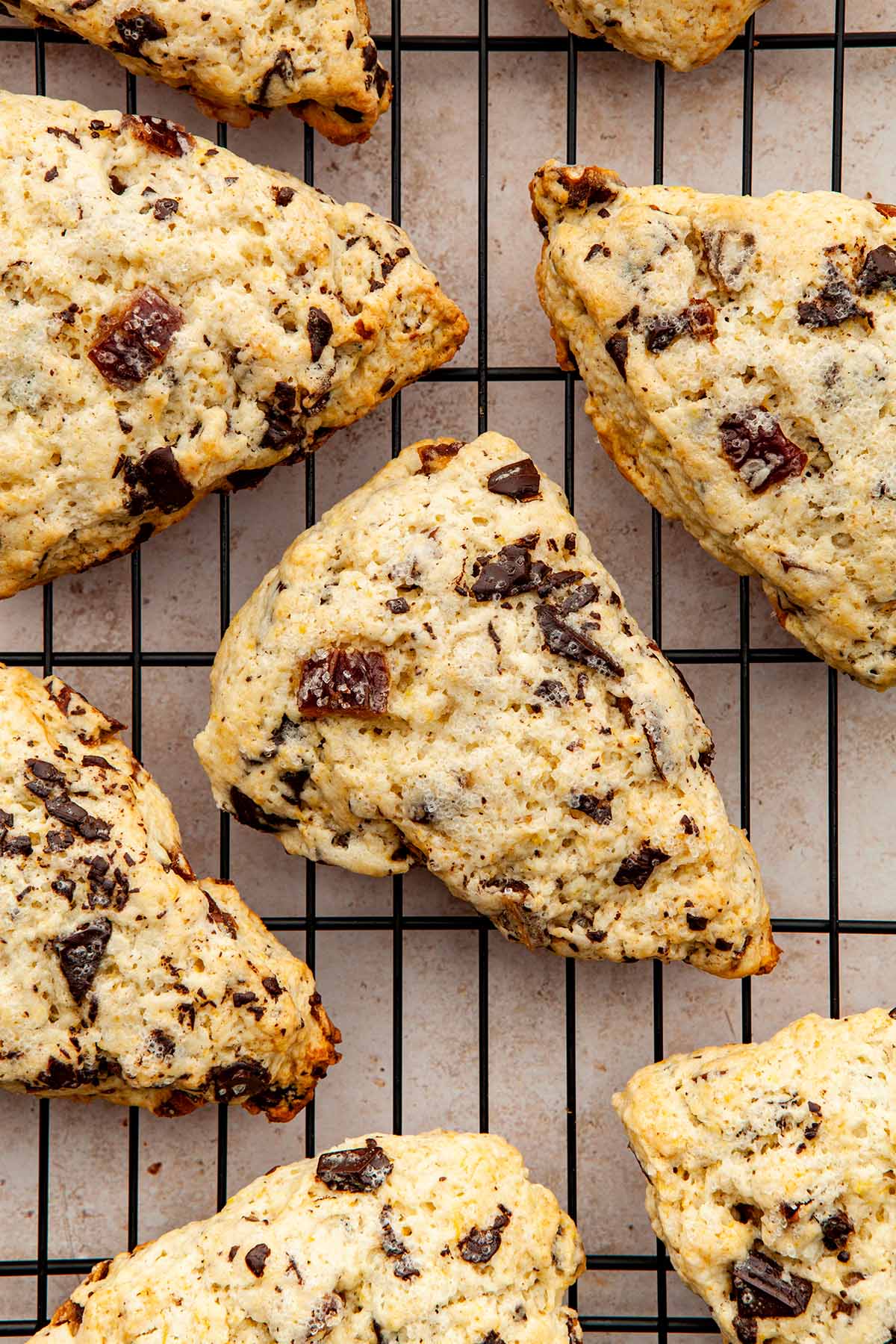
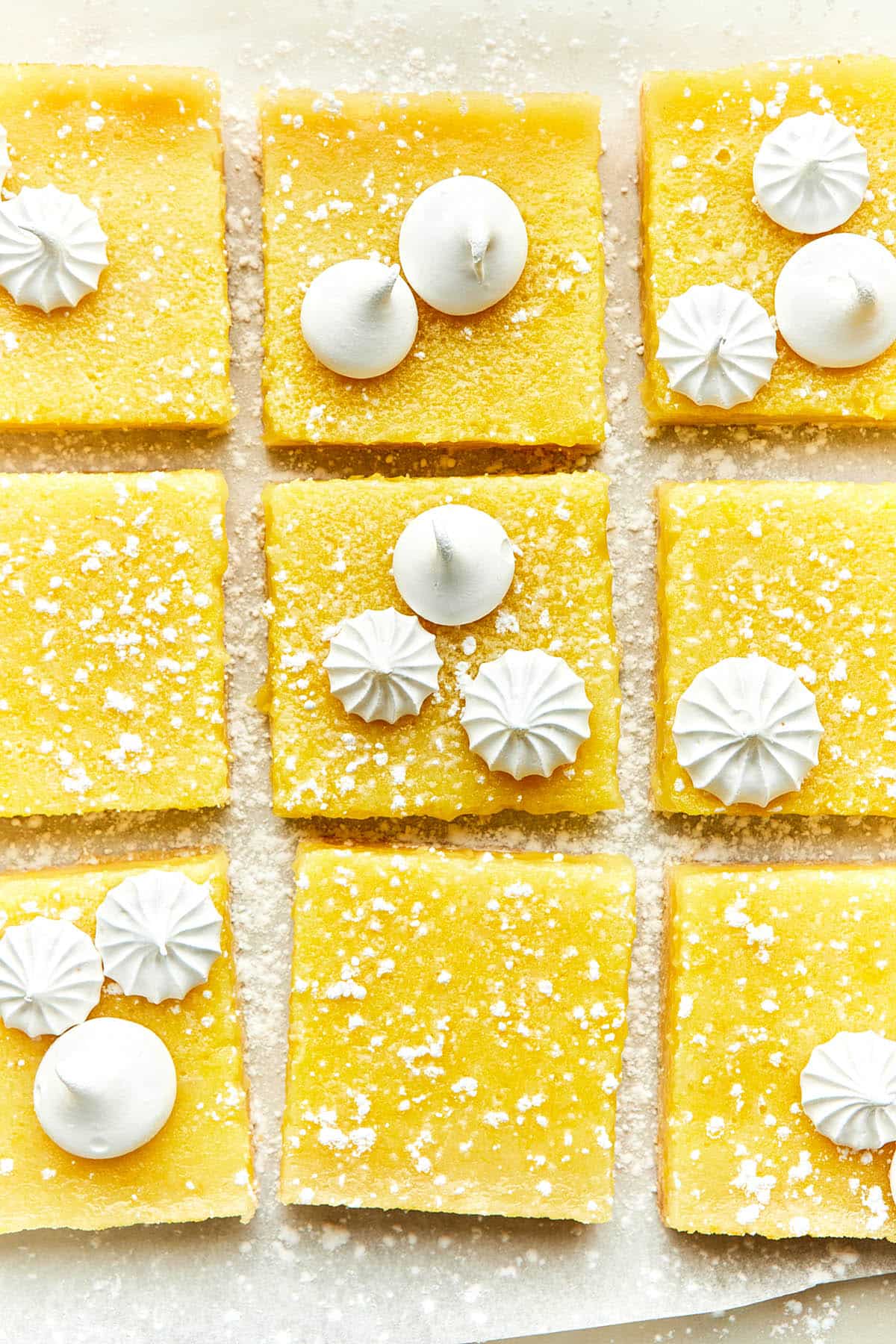
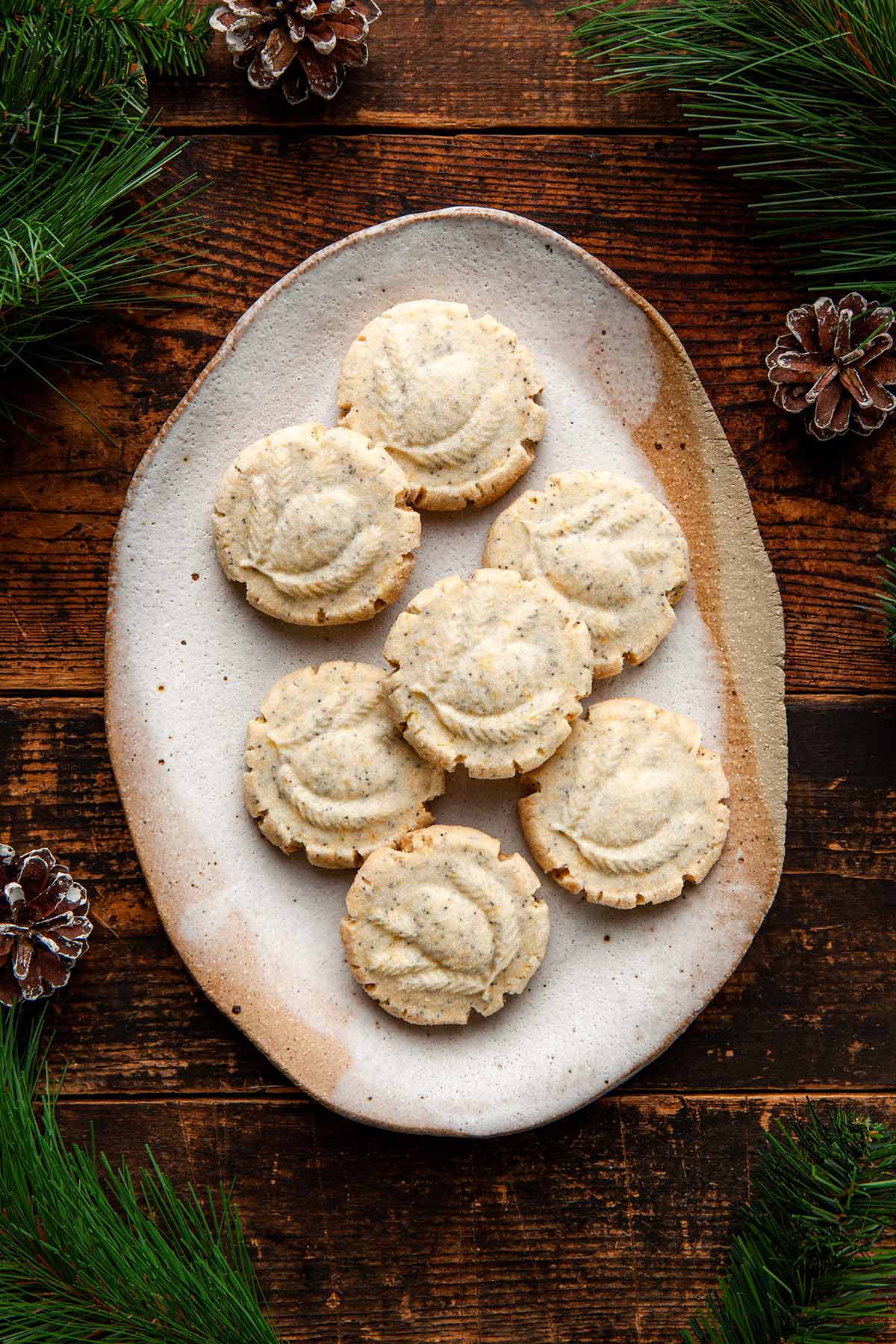
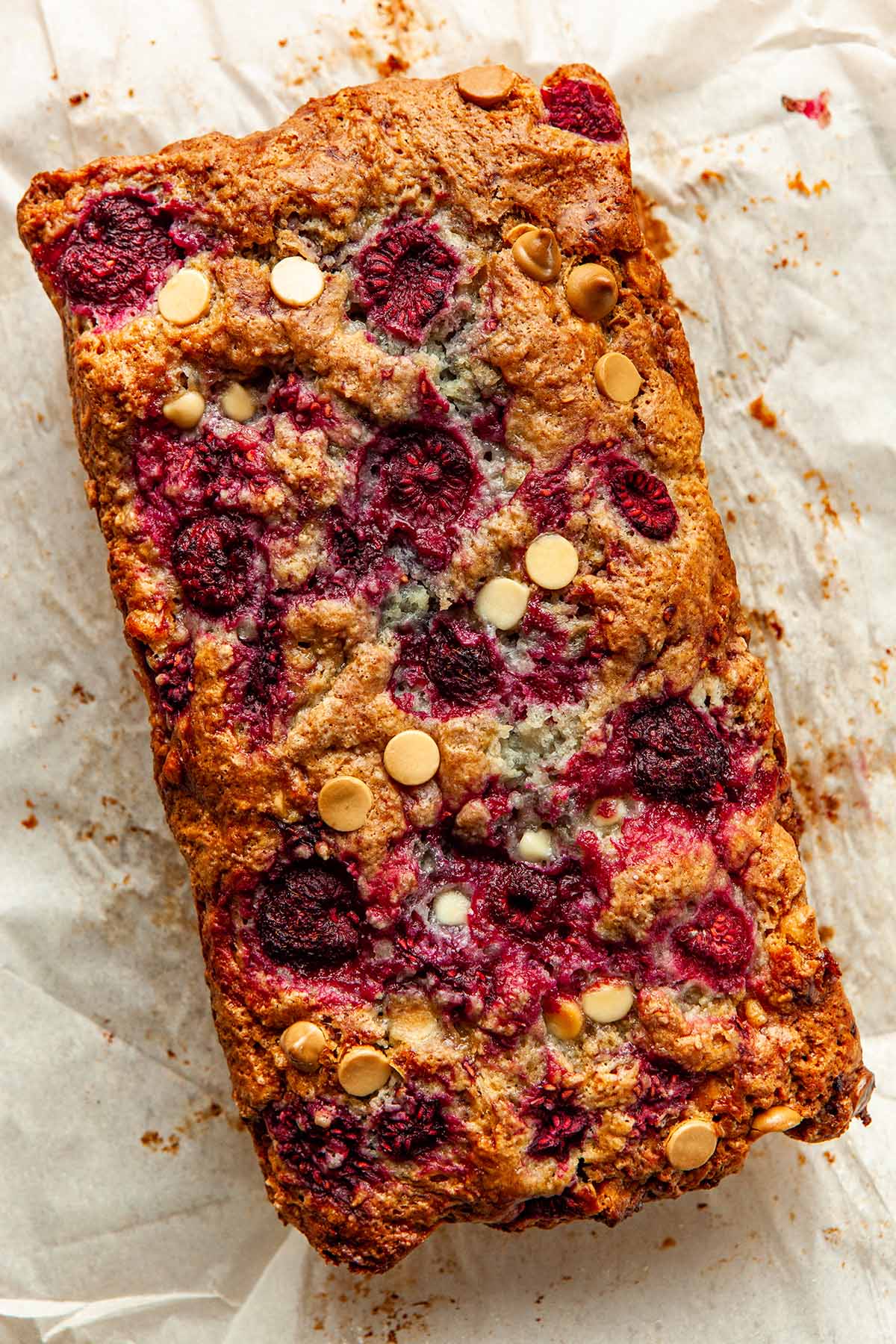
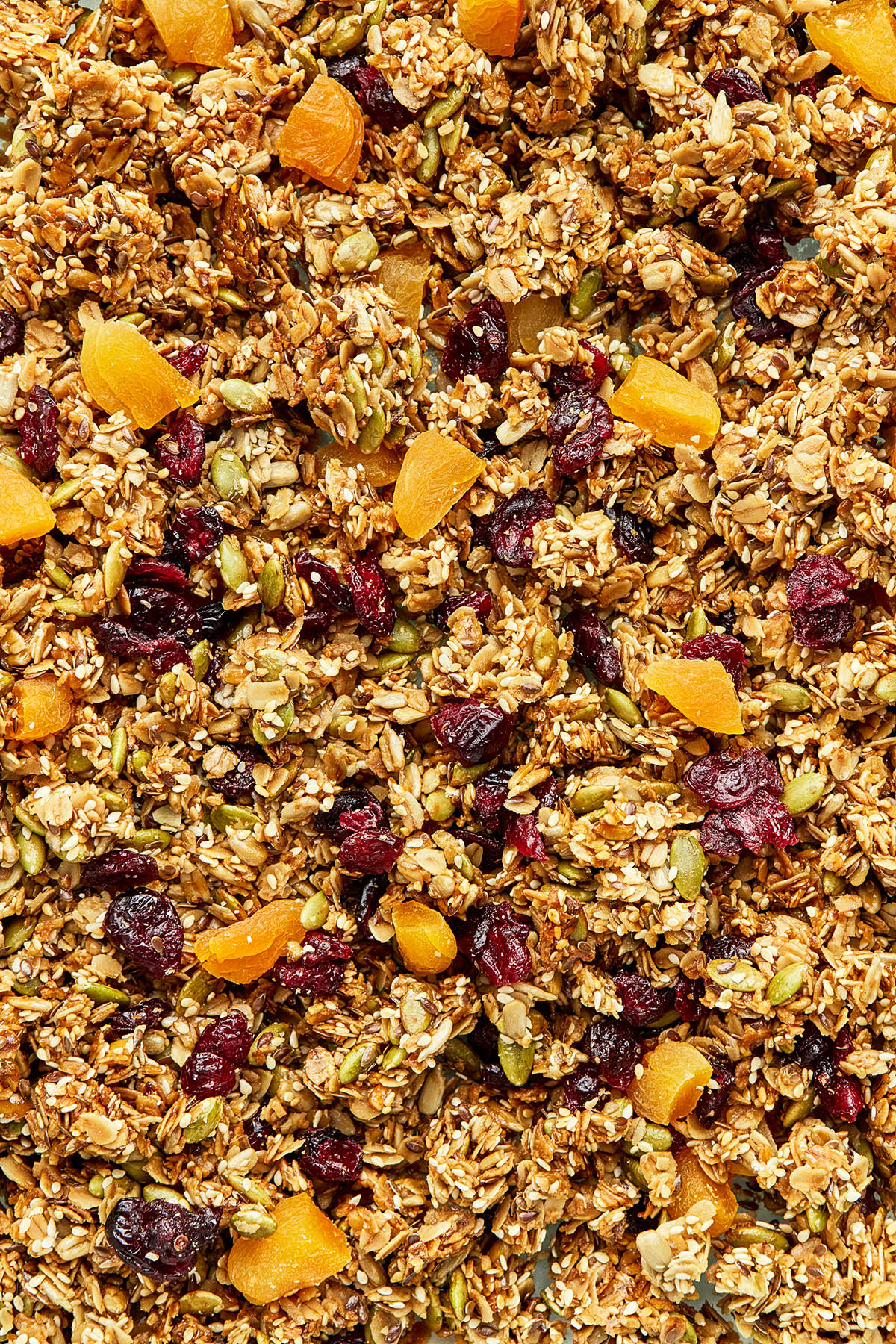
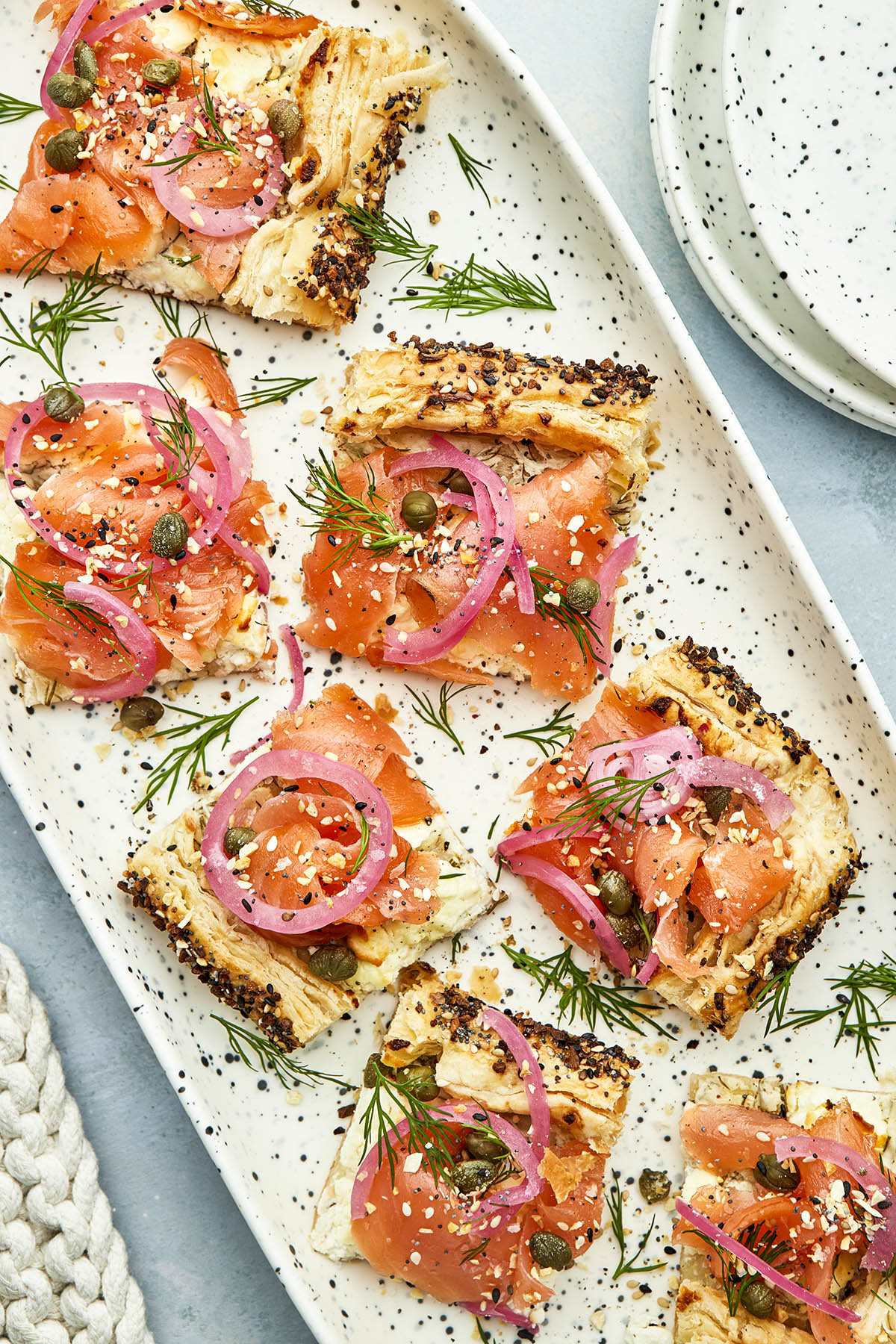
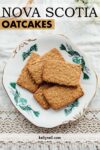
I love this recipe so much! It’s the best oatcake recipe I’ve ever made, and it was super easy. I made the GF version with brown rice flour, and the oatcakes turned out perfectly. My whole family loved them, they didn’t last long! I’ll definitely be making these again soon 🙂 Thanks for the recipe, Kelly!! <3
Delicious! I made them gluten free and have eaten 4 this morning!! Next time I will definitely make a double batch!!
Made these yesterday and they turned out great. I made different recipes before but nowhere near as good as these. I made the standard recipe and followed exact directions. Husband thought they were perfection. And they contain oats so they have to be healthy, right? I know I can rely on your recipes to turn out right the first time. Thanks.
I don’t know why you bother putting freezing instructions because,, let’s be honest, they never last long enough to make it to the freezer. Heck they don’t last long enough for me to dip them in chocolate.
I make mine with lard to make them dairy free for close friends. They are great and I get asked for the recipe lots of times. Time for a new batch I think.
Thanks
Made these last night while watching “Stronger Together” on CBC. Live in Halifax, watched the tragedy unfold over the past week, and needed some comfort food. Your oat cakes satisfied that need perfectly. Your description of buttery and crisp could not have described them more perfectly . I followed the recipe exactly, sized the dough as you suggested, sliced and placed pan in freezer, then baked. Such yummy goodness – they are truly perfect. Thank you.
Oh I’m so glad you loved them!! It sounds so weird but, along with a hot cup of tea, I felt a connection to “home” by making and eating these. Food can be so powerful! Thank you so much for letting me know. xo.
What a great post, it’s so informative. I love that you’ve included vegan and gf options. Very well done. They look delicious and also healthy! I will definitely be trying these!!
Thanks for presenting all these options! Based on your research I think I will reach straight for the butter version but might try whole grain flour. These sound like the perfect cracker cookie. They look delicious.
I am not a baker whatsoever but my mother has been pulling out all her old family recipes and I need to know if oat cakes are one of them because this looks delicious.
My Scottish grandmother used to make these a lot. I didn’t like them as a child because they weren’t “cake” Looking at these now, I know I would love them. Since I never got her recipe, I’m so happy to have found yours. Thanks for sharing!
Sometimes simple is the best. I’ve been craving these since you posted them and I’m not even from NS! I love how you tested them out with all the different kinds of fats…although it’s no surprise that butter is best LOL. I think I’ll give these a try with a bit of ginger.
These oatcakes taste amazing! Thanks for sharing your recipe!
I’m so happy you like them Jenn! Thanks so much for letting me know! xo.
I love that butter is the winner! I have oats on hand and will pin your recipe to try!
Although I have never tried one, I am sure I would love them! Crispy wins for me over chewy, so these oatcakes are perfect for my taste. Very informative post, easy to follow recipe and instructions. Thank you!
These are so amazing! Very easy and very delicious. Definitely need to make a double batch next time because they are hard to share. 🤣
I tried a box of Effie’s Homemade Ginger Biscuits (Oatcakes), that I brought back from Upstate New York. I live in Louisiana where I can get everything but the ginger flavored ones. I found your recipe, added some crystalline ginger and other ingredients I found on the side of the box. I must say, they turned out better than the box ones. What a terrific find – and I can make them for less than a quarter of the cost! Thank you so much!
I am part Scottish, yet never tried these. I’ve always wanted to so thanks for the recipe!
Love these Nova Scotia Oatcakes. I’ve never made them but have had versions on them in the UK with my husband’s family. Thanks for sharing, lovely recipe.
Best Oatcakes ever!
I double the recipe and use 1/2 c brown sugar.
Delicious.
Easy to make and even easier to eat!
Thank you for this recipe.
⭐️⭐️⭐️⭐️⭐️
I made a few days ago but were difficult to put together. Very dry. My batter didn’t look nearly as moist as yours. I googled other recipes and they all had hot water as an ingredient. I tried one of those recipes today. They were moister, but I think I like the taste of yours better. Any ideas on how to get yours easier to roll out?
Hi Lori! This recipe has actually been on my agenda to revisit and re-test so I will do that and report back to you shortly. Thank you for making the recipe and I’ll talk to you soon!
I have been looking for a traditional oatcakes recipe like my Scottish great-grandmother used to make. I am an amateur baker but do most of the cooking for my household. So, I tried Kelly’s recipe and since it is November I added some pumpkin spice. It was too dry, so while it was still in the mixer, added warm water slowly, just a few tablespoons until the dough began to clump together just a bit. Then I rolled the dough out several times. I tried getting the dough as thin a possible 1/4 to 1/8 inches. Because I’m not skilled with the rolling pin my first batch wasn’t perfectly even. However, I used a small drinking class to cut small circles and then baked the little rounded cakes for a few extra minutes. This worked well, their shape help up nicely and didn’t expand much. The thinner pieces were of course crispier, but all were nice a buttery. When I try this try this again and I will be sure get the dough thinner. This recipe is a keeper, the perfect base to try different variations of flours, fats, and spices. Best of all, it tastes like my great-grandmother’s oatcakes!
I love these! I substituted a mix of 1/3 cup unsweetened cocoa, 1/3 cup unsweetened medium shred coconut and 1/3 cup ground flax seeds for the 1 cup of flour and they were delicious! I might experiment with adding 1/4 cup of flour back in and cutting the sugar some next time I make them.
Oh yum! Thanks for letting me know Megan — you’re version sounds delish!😋
Thanks for the Nova Scotia-inspired recipes! Your oat cake recipe is very close to one I tried recently. The only differences are that the other one has 2 cups of rolled oats instead of 1 cup and adds 1/4 cup hot water. The flavour is wonderful but the cookies aren’t as crisp as I would like. I’m going to go with your idea of separating the cookies, rather than just scoring, and lower the temp a bit so that they dry out – and hopefully crisp up – more.
Love your oatcake recipe! They get rave reviews from my friends too. Just want to clarify, do you use salted or unsalted butter?
Thanks!
Hi Kim, that’s so awesome, thanks for letting me know! I use salted butter in all of my recipes 🙂